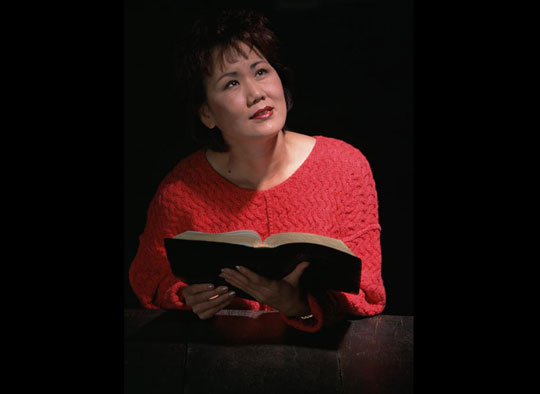
This is the third article in a series about the spiritual life of catechists, inspired by the list of characteristics in the National Directory for Catechesis.
Catechists are called to a strong prayer life, having not only a habit of regular personal prayer but a living relationship with God. The Catechism describes prayer as God’s gift, a covenant relationship, and communion of life in Christ. Through it, we discover God, who dwells in each human heart (CCC 2558–2565). A catechist with a well-developed prayer life will naturally be a better teacher and leader of prayer, so it is very important to find and recruit people who give evidence of a life of prayer and to assist them to deepen it through regular formation.
As someone who trains new catechists, I have the opportunity to introduce them to different forms of prayer besides ones they may already know. All Catholics know about vocal prayer—certainly a place to start. It is what we teach first, beginning with helping little ones to make the Sign of the Cross. Meditative and contemplative prayer (CCC 2705–2719), however, are less-familiar expressions of prayer, which can be wonderful ways to discover and deepen one’s relationship with God.
My favorite method of meditative prayer is Ignatian reflection using the imagination to enter into Scripture. Some of my most profound spiritual experiences have come from the simple act of putting myself into a Scripture story. In our diocesan training for new catechists, we lead them through a guided meditation on meeting and being embraced by Christ after the Sermon on the Mount and allow them a short time to listen to his words for them that day. They are then encouraged to answer him. This exercise never fails to move many of the catechists deeply—in fact the box of tissues is often needed afterwards! This simple form of meditation can also be used in the classroom to help students find and listen to God.
Teaching catechists to use—and teach—the daily Examen to meditate on their cooperation with God’s grace is also a simple and fruitful way to enrich their prayer lives. Meditation can be either mental prayer or journaling. A prayer journal is also a great method for catechists to make themselves accountable for regular prayer.
Catechists should also be invited to explore contemplative prayer through the ancient Carmelite and Benedictine traditions, such as the writings of St. Teresa of Ávila. At the very least, catechists should develop a practice of silence. It is in silence that God speaks, and in our busy world, there is never enough silence.
A catechist who both speaks and listens to God in prayer will be more authentic and more Spirit-filled when in the classroom. We owe it to catechists and to those they encounter to assist them to deepen their prayer lives.
Read the first two articles in the series:
The Spiritual Life of Catechists, Part 1: Finding and Sharing Love and Joy
The Spiritual Life of Catechists, Part 2: Authenticity of Life



Joyce, this is so critical…we teach kids to say prayers but we too often forget to teach adults how to pray. I personally am grateful to the Jesuits at St. Ignatius College Prep who introduced me to Ignatian prayer when I was in high school.
I am a catechist, sometimes we teach young children how to pray and completely we to reminds adult about practicing prayer.